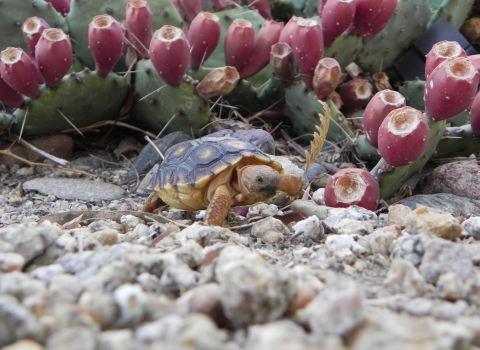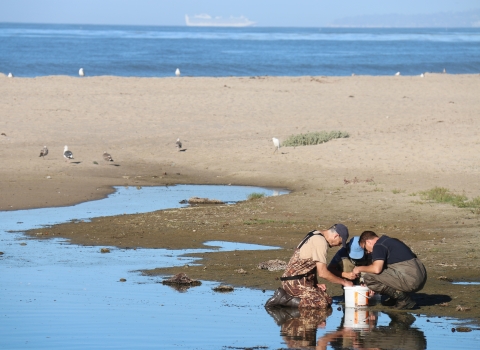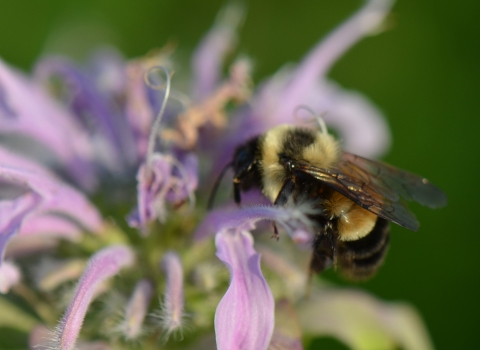Projects and Research
Working with others is at the core of how we operate, and through those partnerships, we develop a number of conservation projects across central and western Texas. Learn more about some of the key efforts we have underway.
The U.S. Fish and Wildlife Service (Service) recognizes the critical role of transportation in the economic and ecological well-being of human communities. Transportation projects influence the character of a region by the number of people and amount of goods and services it transports. Transportation designs also influence plant and animal species and their habitats, and the ecological health...
When a species is proposed for listing as endangered or threatened under the Endangered Species Act (ESA), we identify specific areas that are essential to its conservation. These are the species’ critical habitat.
Critical habitat is a tool that supports the continued conservation of imperiled species by guiding cooperation within the federal government. Designations affect...
The Species Status Assessment framework is an analytical approach developed by the U.S. Fish & Wildlife Service to deliver foundational science for informing all Endangered Species Act (ESA) decisions. An SSA is a focused, repeatable, and rigorous scientific assessment. The result will be better assessments, improved and more transparent and defensible decision making, and...
To make sure all species listed as threatened or endangered under the Endangered Species Act (ESA) continue to have the appropriate level of protection, the U.S. Fish and Wildlife Service (Service) conducts assessments of their status once every five years. We call these five-year reviews.
Search the database for available recovery plans and...
Working with partners, the U.S. Fish and Wildlife Service (Service) uses a range of conservation tools to recover threatened and endangered species to ensure that they are able to survive on their own in the wild. These tools can include acquiring and restoring habitat, removing invasive species, conducting surveys, monitoring individual populations, and breeding species in captivity to...
A candidate species is a species for which the U.S. Fish and Wildlife Service (Service) has enough information on biological vulnerability and threats to warrant listing as endangered or threatened under the Endangered Species Act (ESA), but we are precluded from doing so by higher priority work within the Listing and Classification Program.
Candidate species may be identified...






